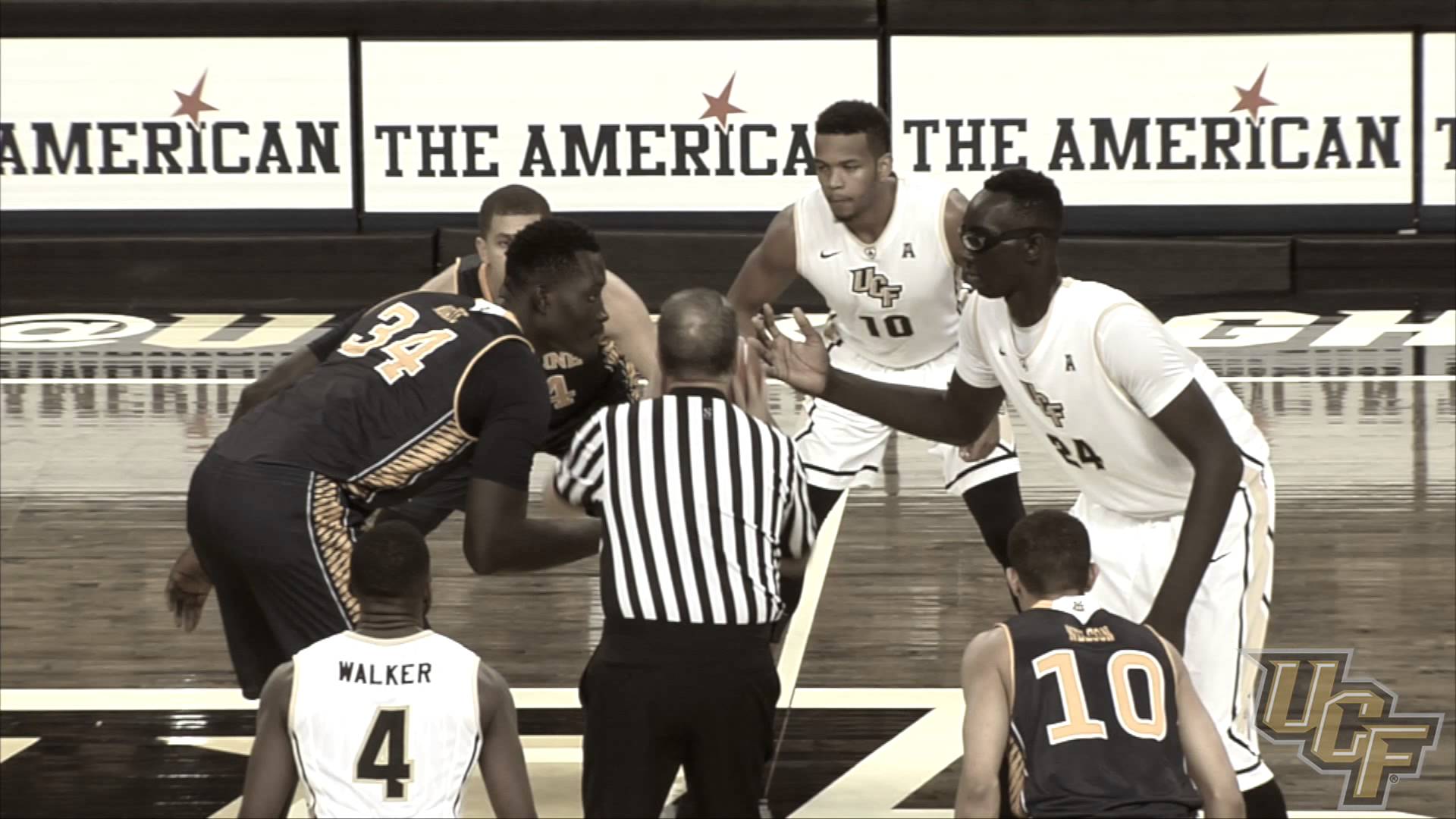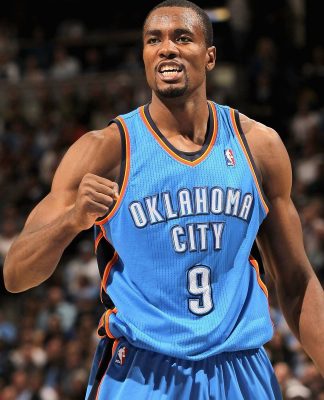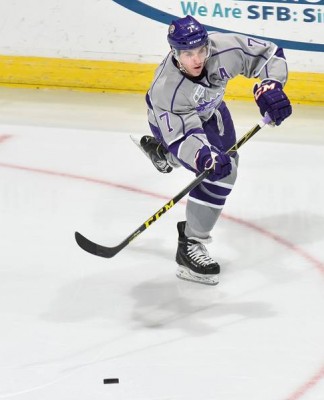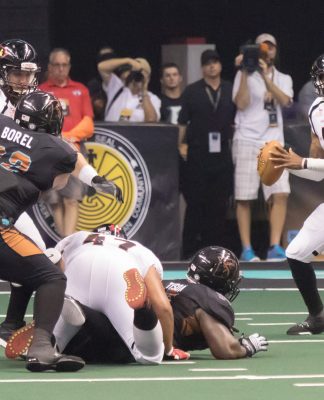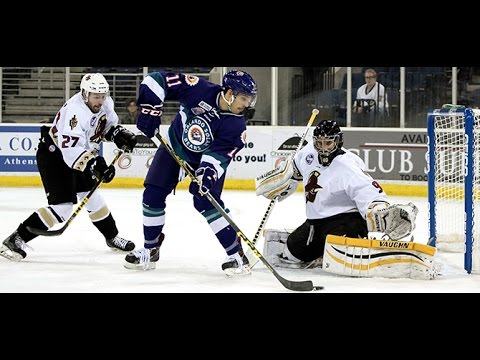It is rare to see a team take on two identities. Then again, it is rare to see a player quite like Tacko Fall.
The season may be past its halfway point and into conference season, but the novelty of the 7-foot-6 freshman center has not quite worn off. It may never wear off.
Novelty though seems to be the right word though. When Tacko Fall is in the game, UCF has to play a style seemingly completely different than when he is out of the game. The Knights have to play this way because of Fall’s limitations and also to take the most advantage of his unique skills.
“He’s learning,” coach Donnie Jones. “He’s a freshman. The pace of the game sometimes and the matchups of the game sometimes is new to him. With that, we have to adjust to the way the flow of the game is going. I like to get him as many minutes as I can because the best thing for him is experience. He’s getting in practice too. He’s got a great attitude. His best days are ahead of him.”
There is still a learning curve in playing with someone with that kind of height. Fall undoubtedly changes things defensively. His length and size makes him really valuable in the paint. His lack of mobility though keeps him glued to the paint. The Knights will rarely play man with Fall in the game.
And that is for good reason. Why would you want a 7-foot-6 player anywhere but the paint? And keeping him planted there has helped UCF’s defense.
According to Sports-Reference, Fall has a 3.7 defensive box plus minus, meaning the team plays 3.7 points per 100 possessions better than the average player on defense with Fall on the floor. The Tacko Swat tracker is a real thing as Fall has a 13.3 percent block rate, fifth in the nation.
“He’s definitely a big presence,” Chance McSpadden said. “You definitely have to adjust to him being in the game. He’s definitely an offensive and defensive threat. When you drive in there, you put the ball basically anywhere and he’ll go get it. He’s a shot changer and a shot blocker. Guys come in the lane, they know he’s right there and have to change their shot. He’s a big help offensively and defensively.”
The team’s offense though also has to change. Fall does not have the mobility to run pick and rolls. He rarely is going to leave the paint on the offensive end either. This clogs driving lanes some and forces the Knights to keep shooters on the perimeter, something that is at a premium for this team.
The pace tends to slow when Fall is in the game. There will be a lot more post ups for Fall and fewer drives from wings like Chance McSpadden, Daiquan Walker or A.J. Davis. There just is not the room to do it with Fall on the strong side at least.
Against a team like East Carolina that often puts five shooters on the floor, that makes playing zone for long periods of time difficult. The Knights learned that the hard way in their come-from-behind 71-68 win in Greenville, N.C., on Jan. 2.
Fall played only 13 minutes in that game as both of UCF’s centers struggled against East Carolina’s smaller lineup.
As competition has stiffened in American Conference play, Fall has seen his offense and his minutes begin to slow. He is playing 14.3 minutes per game in American play, but has scored just 14 points in three games. His turnovers are way up — 30.5 percent turnover rate — and his blocks are down.
Increasingly, Jones has turned to his other big man Justin McBride.
Playing with McBride at center leads to a different team too. The Knights are able to run much more and play a much more smoother inside-out game. McBride’s ability to step out and hit 15-foot jumpers allows UCF to play more pick and roll and drive-and-dump plays.
“I play a little bit different than he does,” McBride said. “I’m the screamer and the yeller. That’s just what I do. I always did that. It’s not that I bring a different type of energy. I just bring it in a different way.”
McBride has completely remade himself in many ways entering this season. He lost some weight — although, he is still a load at 325 pounds — and has shown off more mobility.
After being a huge negative statistically last year — he had a -6.3 box plus-minus last year, meaning the team was 6.3 points per 100 possessions worse when he was on the floor — he has reformed himself into a positive player — 1.0 box plus-minus this year. There are moments when he is clearly more valuable than that prized 7-foot-6 center.
And that is why McBride has finished several games. He has the highest usage rate on the team, according to KenPom.com, and he is reliable taking those shots, making about two of every three shots.
In conference play, he is playing 23.0 minutes per game, up from his 12.1 season average, and is scoring 12.7 points per game while shooting a still efficient 63.0 percent.
All that helped McBride get named to the American Conference’s weekly honor roll. That was a big deal for a player who struggled so much last year.
“Justin has really been improving,” Jones said. “Each and every game, he has made big strides. I think the game is starting to finally slow down a little bit for him. He’s been working harder. There’s no secret why he has been much more productive on the floor. I think it’s starting to really hone in for him what he needs to do for us.”
For the Knights to be successful this season in the American Conference, they will have to rely on both of their centers and maximize them both. Controlling pace and changing pace when these two players are in the game is absolutely key for this young team.
There is still clearly an adjustment that has to be made to playing with Fall. McBride said Fall is starting to get the flow and pace of the game. Playing with and against him is different, but it is something the team is adjusting to quickly.
